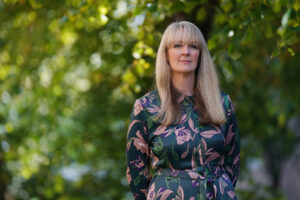Multidisciplinary working in care homes is key for staff and residents
Although the full results are set to be published in the coming weeks, the University of Salford have given us a teaser of their findings from their new study.
A research team at the University of Salford have been working on a study into multidisciplinary working in care homes. This is when a group of health and care staff who are members of different organisations work together to make decisions regarding the treatment of individual patients.
Spanning the last three years, the study, which is otherwise known as Not the Last Resort, has been led by Dr Melanie Stephens, Associate Professor in Adult Nursing in the School of Health, and Society at the University of Salford.
Dr Stephens said: ‘Our study findings show the transformative power of interprofessional education in social care settings. The project is not only inspiring but also very timely, coming so soon after Chief Medical Officer Professor Chris Whitty’s annual report recommending action to improve quality of life for older adults.’
In November 2023, Professor Chris Whitty, chief medical officer, recommended ‘old-fashioned’ methods for the ageing population to remain healthy as it has been discovered that by 2050, a quarter of the UK population with be aged 65 and over. Some of the advice he provided was that older people get lots of exercise, receive frequent mental stimulation and consume a balanced diet which doesn’t involve much alcohol or smoking.
However, going back further in time, since 2021, the University of Salford, in partnership with the University of Bolton, Manchester Metropolitan University and the University of Manchester, have conducted two studies across five care homes, which perhaps suggest a more personal way of improving older people’s quality of like, whilst also benefitting staff members. As part of the two studies, 50 pre-registration students from nursing and allied health professions were given the opportunity to experience an interprofessional training scheme as part of their placement in a care home.
Students originated from a range of health and social care professions, including nursing, dietetics, occupational therapy, physiotherapy, and sports rehabilitation. During periods of overlap, when students were out on placement at the same time, they worked as an integrated team. They attended a weekly MDT meeting with other students, staff and two residents to work on a goal the residents wanted to achieve.
Ideas to push students out of their comfort zone who are working to build a career in health and social care could arguably be one of the best decisions the industry could make. It’s no secret that staff retention rates have hit an all-time low in social care, but if people knew they could development themselves, they could be attracted to it. This is idea is currently being explored by the government and other care experts.
Dr Stephens said: ’Through evaluation, we found that participation in the initiative yields a positive impact not only on care home staff and residents, but also on learners’ knowledge, skill and personal development. The study has shown that residents benefit from improved quality of care, access to new interventions and equipment and an increase in their sense of wellbeing. It has also helped to challenge students’ negative perceptions of care homes.’
‘With the strategic importance of care homes to the delivery of appropriate health and social care, and calls to expand and diversify the future workforce, it’s imperative that we develop innovative placement models and inspire students to see the immense potential of careers in social care,’ Dr Stephens said. ‘Looking ahead, we are hoping to secure funding for a future study which will see us working with six other universities so we can examine of the model across geographical locations and different care home providers.’
Findings from the full report are due to be published within the coming weeks, however, if you can’t wait until then, a brochure summarising the projects is available from Dr Stephens’ email: m.stephens@salford.ac.uk.
Image: Thomas Foster
How digital care pathways could improve under integrated care systems

















